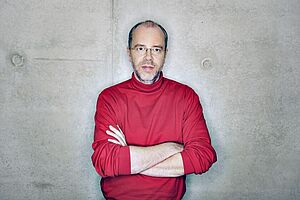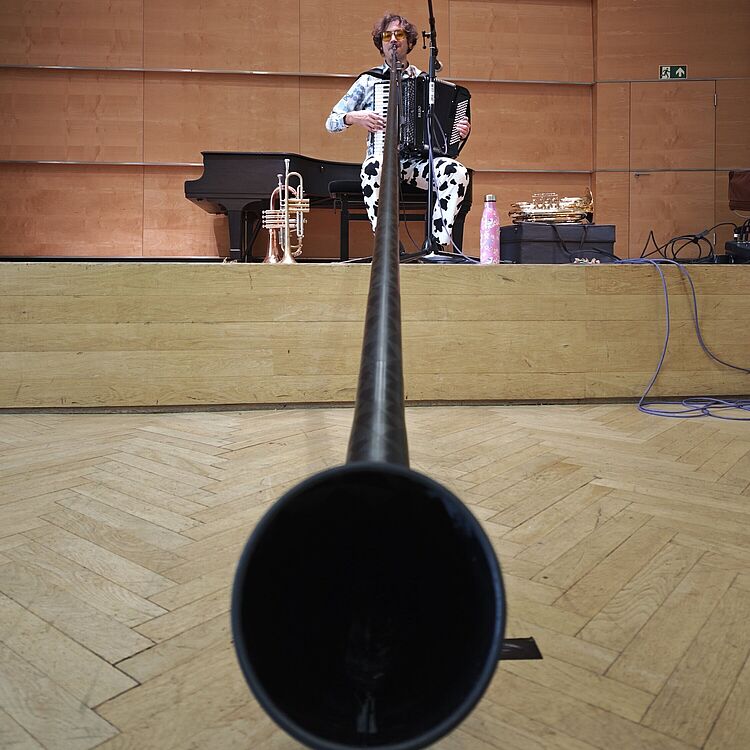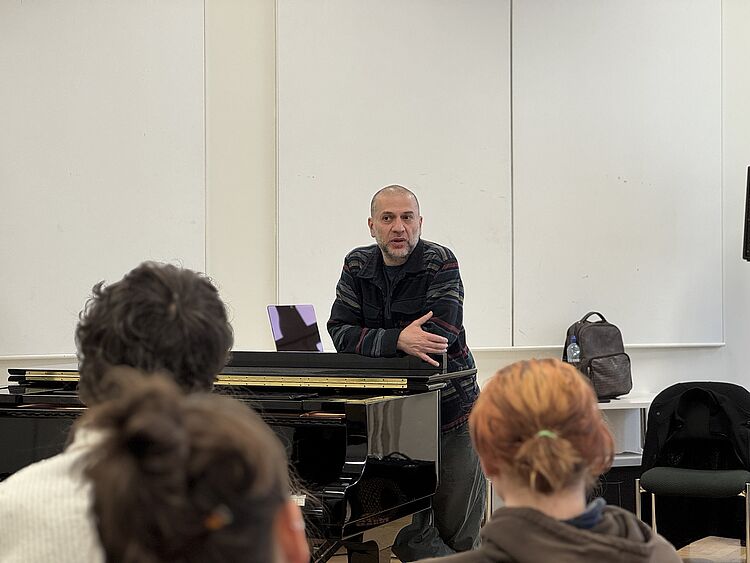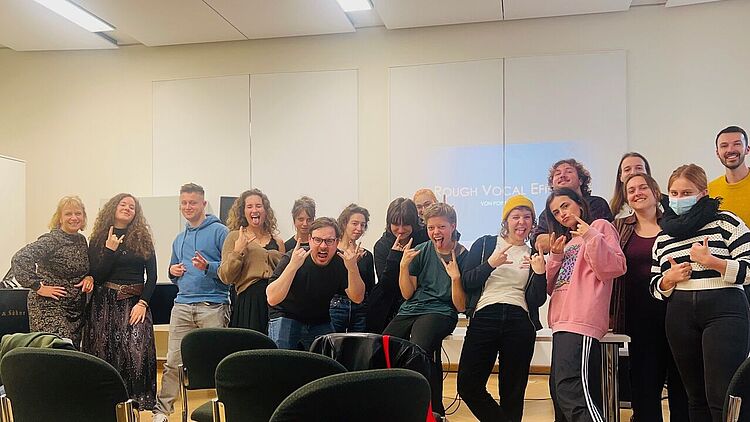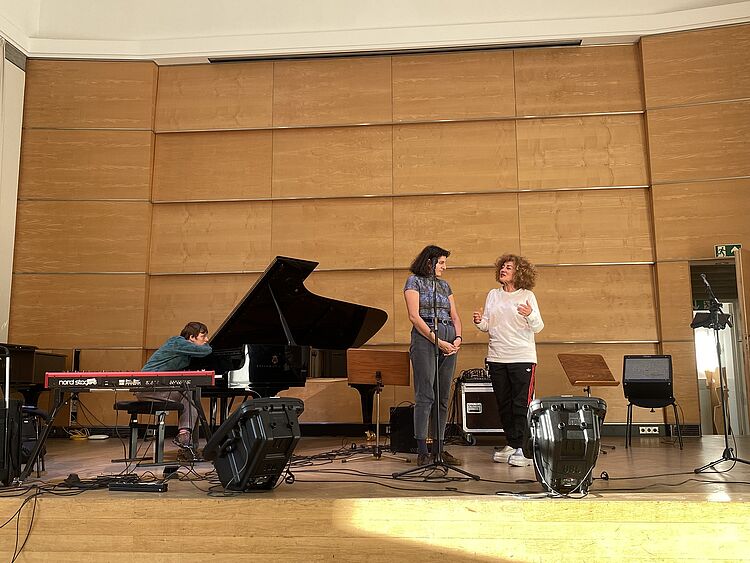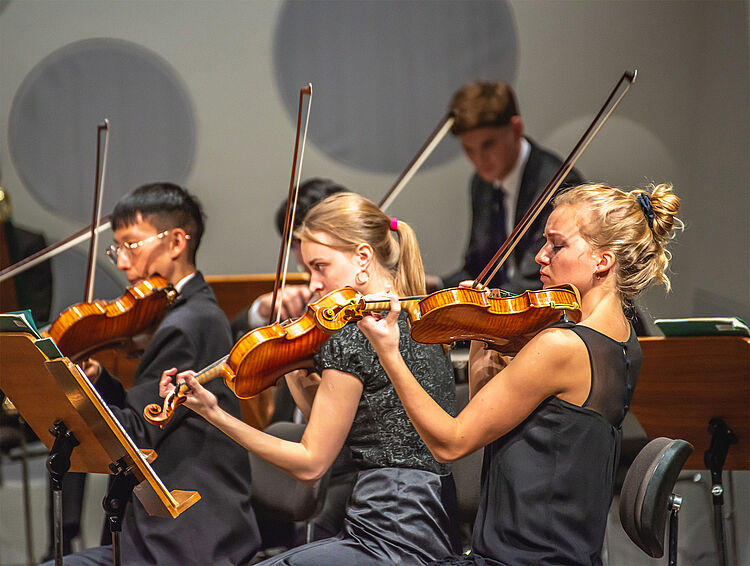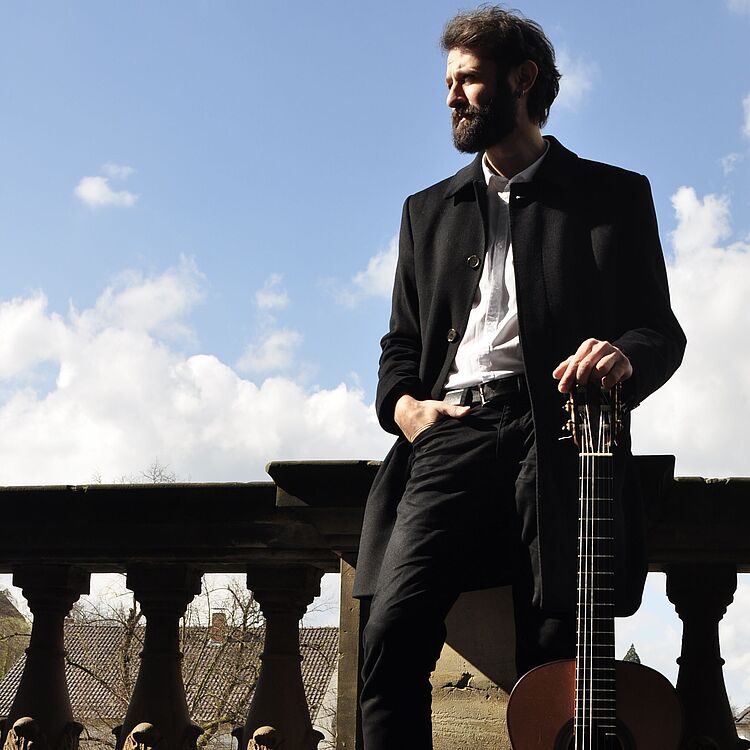Hammond Organ Jazz/Rock/Pop
The study of the Hammond organ is divided into two fields of work. The first field comprises instrumental lessons on the Hammond B-3, while the second field puts the knowledge acquired into practice by playing the classical organ trio. The connection with the guitar and drum classes offers all students the valuable opportunity to broaden their musical horizons in ensemble work.
Training broad, practical, individual
Comprehensive Teaching of Playing
The aim is to learn all aspects of playing the classic Hammond B-3, from jazz, blues, funk, gospel, rock and pop to improvisation and solo playing, chord voicings and accompaniment techniques on the organ to developing bass lines (left hand bass), bass pedal technique, drawbar settings and the use of the Leslie Cabinet.
History of the Hammond B-3
It is indispensable for musical understanding to get to know the history of the Hammond B-3 in jazz, rock and pop. An essential part of this is the listening and analysis of important and style-forming musicians:
Jazz organ: Wild Bill Davis, Jimmy Smith, Jimmy McGriff, Jack McDuff, Don Patterson, Larry Young, Eddie Louis, Larry Goldings et al.
Rock and pop organ: Brian Auger, Steve Winwood, Keith Emerson, Jon Lord, Tom Coster, Billy Preston et al.
Ensemble Lessons in the Classical Organ Trio Instrumentation
The classical jazz organ trio consists of Hammond B-3, guitar and drums. Within this ensemble, the skills learned in instrumental lessons are interactively implemented. Due to the special combination of instruments and the special aesthetics developed from them, the following main topics are taught:
- Working out blues, jazz standards and original classical compositions by master organists such as Jimmy Smith, Larry Young and others.
- Harmonic-rhythmic aspects of the interaction of Hammond and guitar
- The organist takes over 3 functions (solo play/accompaniment / bass) with his instrument simultaneously. This also results in specific tasks in the interaction of Hammond and drums.
- Development of own arrangements for organ trio
- Learning different special "Organgrooves" (e.g. Boogaloo, Shuffle, Slow Blues)
Within this teaching format, the Hammond B-3 Master's programme is connected with the students of guitar and drum classes. They have the opportunity to broaden their musical horizons within this framework. Thanks to the special ensemble character, studying in this instrumentation is very valuable for guitarists and drummer.
Faculty Professors & Lecturers
Contacts for all professors, lecturers and staff can be found here
Masterclasses Workshops & Projects
Matthias Schriefl zu Gast
Meisterkurs an der HfM Dresden am 23.10.25
Masterclass mit Jazzpianist
Vardan Ovsepian zu Besuch
Workshop zu Rough Vocal Effects
Fachrichtung Lehramt Musik Jazz/Rock/Pop Gesang
Workshop mit Maria João
Portugiesische Jazzsängerin gibt Jazz/Rock/Pop Studierenden Tipps
Application Entrance Requirements
News Jazz/Rock/Pop
Klangwelten zwischen Uraufführung und Klassikern
Neujahrskonzerte am 10. und 11. Januar
DAAD-Preis geht an Gitarristen
Ozan Coşkun wird geehrt
Studies Curriculum & Course Schedule
Contact Us
Jens Wagner
Prof.
Jazz/Rock/Pop Klavier, Methodik, Improvisation, Ensemble
Studiendekan Jazz/Rock/Pop

